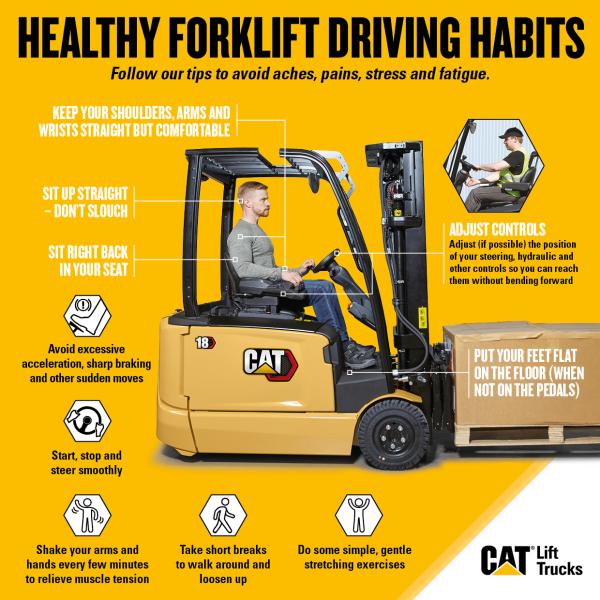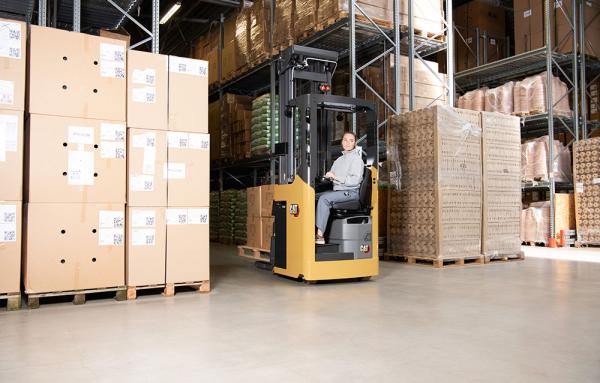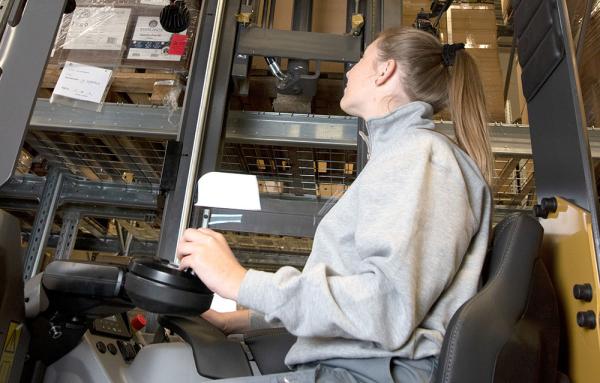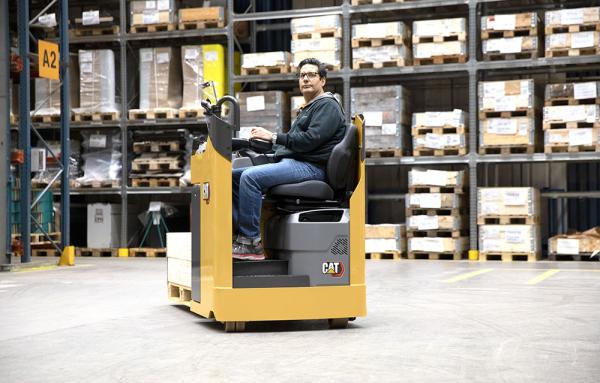Aches, pains, stress and fatigue caused by poor operating practices when using forklift trucks are very bad for business. Why should we all take them more seriously? How do they arise? And what can we do to avoid them?
Ailments of the kinds mentioned can be costly to your company. That’s because operators suffering from such symptoms will be:
- Less motivated – and so less productive
- Less capable, physically, of doing the job efficiently
- Less able to focus on the job – and more at risk of an accident
- More likely to take sick leave
Understand forklift operators’ health issues
Lift truck operators often complain of pain in their back, neck, shoulders, wrists, arms or knees. Importantly, this should never be ignored, as untreated conditions can become more serious with time. Urge workers to seek medical attention.
Sitting for long periods, as some forklift drivers do, is not healthy for the human back. Twisting, turning, bending and leaning from that seated position puts further pressure on the body. It can easily result in strains. In fact, the frequently repeated movements involved in operating a truck may lead to repetitive strain injury (RSI).
Jerking motions of the lift truck can also be damaging – and in extreme cases there’s a possibility of whiplash injuries. Then there’s the issue of whole-body vibration (WBV), which can damage the back in particular. At lower levels, vibration, noise and jerky truck performance may generate mental and physical stress and fatigue.
Choose ergonomic lift trucks
One obvious way of reducing these impacts is to choose lift trucks with better ergonomic design. The overall layout and features should allow a natural, relaxed posture for the user. Positional adjustability of the steering wheel and hydraulic controls, so they can be reached without strain, is essential. Adjustable armrests help to achieve this, while providing anatomical support. Good all-round visibility is also fundamental, as it minimises the need to twist, turn, bend or lean for clear views.
An adjustable suspension seat aids correct positioning and is one defence against vibration. Effective damping of floors, masts, motors and other components is another important factor in minimising jolts, vibrations and noise.
These issues, and many others, have been prioritised in designing the latest sit-on stackers from Cat® Lift Trucks. The same careful attention to ergonomics is obvious throughout the Cat® warehouse equipment and counterbalance forklift truck ranges.
By the way, it’s also worth looking at the floor quality in your workplace. Rough surfaces produce more vibration and accelerate lift truck wear.
Encourage good habits in your forklift operators
Here are a few changes you can encourage in your forklift operators’ posture and behaviour to protect their health:
- Sit right back in your seat
- Sit up straight and don’t slouch
- Keep your shoulders, arms and wrists straight but comfortable
- Shake your arms and hands every few minutes to relieve muscle tension
- Put your feet flat on the floor, if not on the pedals
- Adjust (if possible) the position of your steering, hydraulic and other controls so you can reach them without bending forward
- Avoid excessive acceleration, sharp braking and other sudden moves
- Start, stop and steer smoothly
Make time for exercise
Before and after each shift, and perhaps at other times, forklift operators should do some simple stretching exercises. These should be gentle stretches – enough to warm up and loosen the muscles and joints, but not to cause pain.
You will find a variety of stretching exercise guides for lift truck operators online. One good example is the video from OHCOW (Occupational Health Clinics for Ontario Workers). Searching ‘forklift stretching exercises’ via Google will bring up other videos and written instructions.
You could put up signs reminding operators to stop and stretch. Or even have set times when all workers gather to do their stretches together. Taking short breaks to walk around, loosen up and get the blood circulating is important too. Meanwhile, anything you can do to encourage exercise and sport will help by improving employees’ general fitness and flexibility.
Click here for some further ideas on keeping your core asset – your workers – in good shape.



